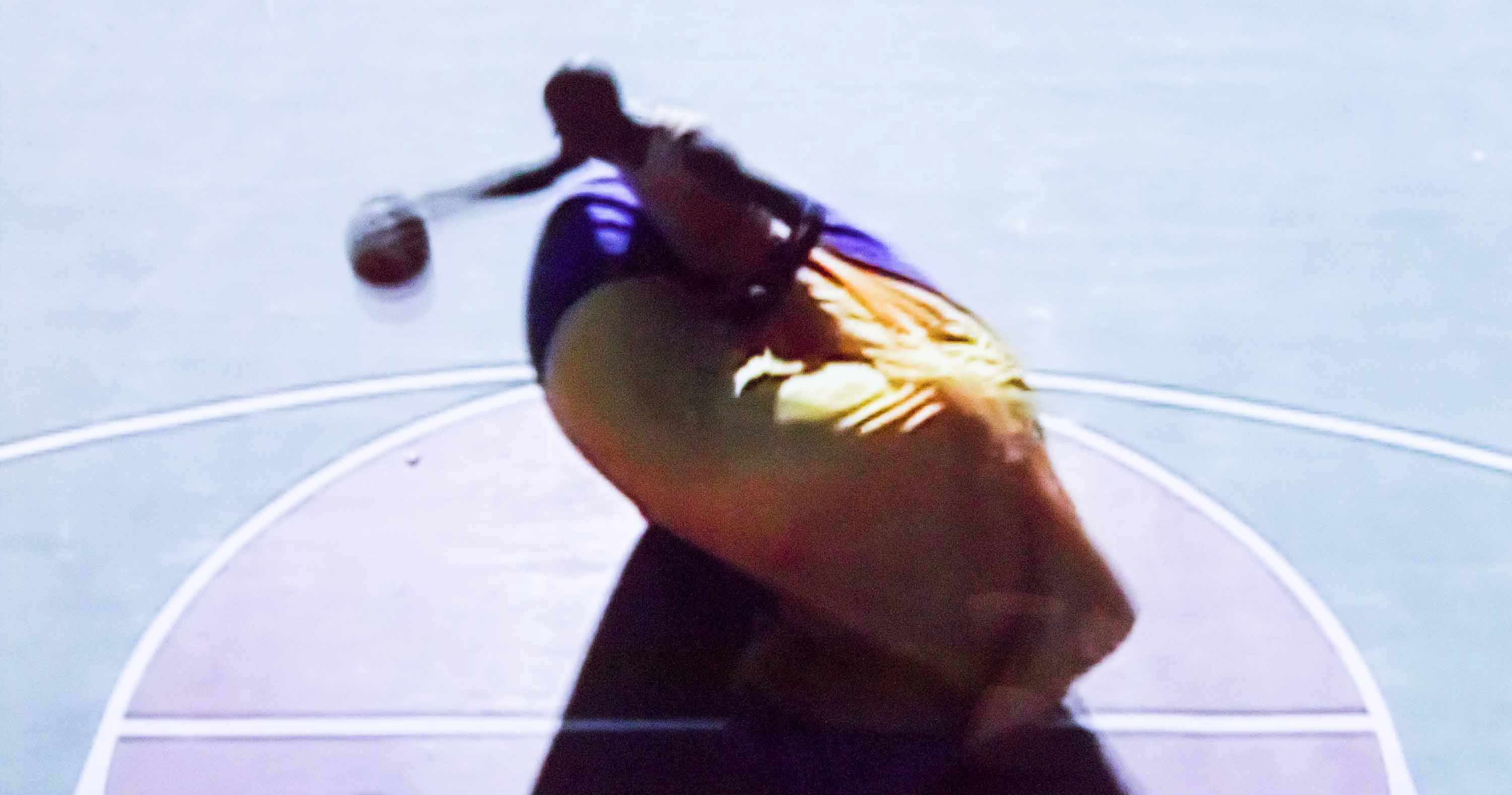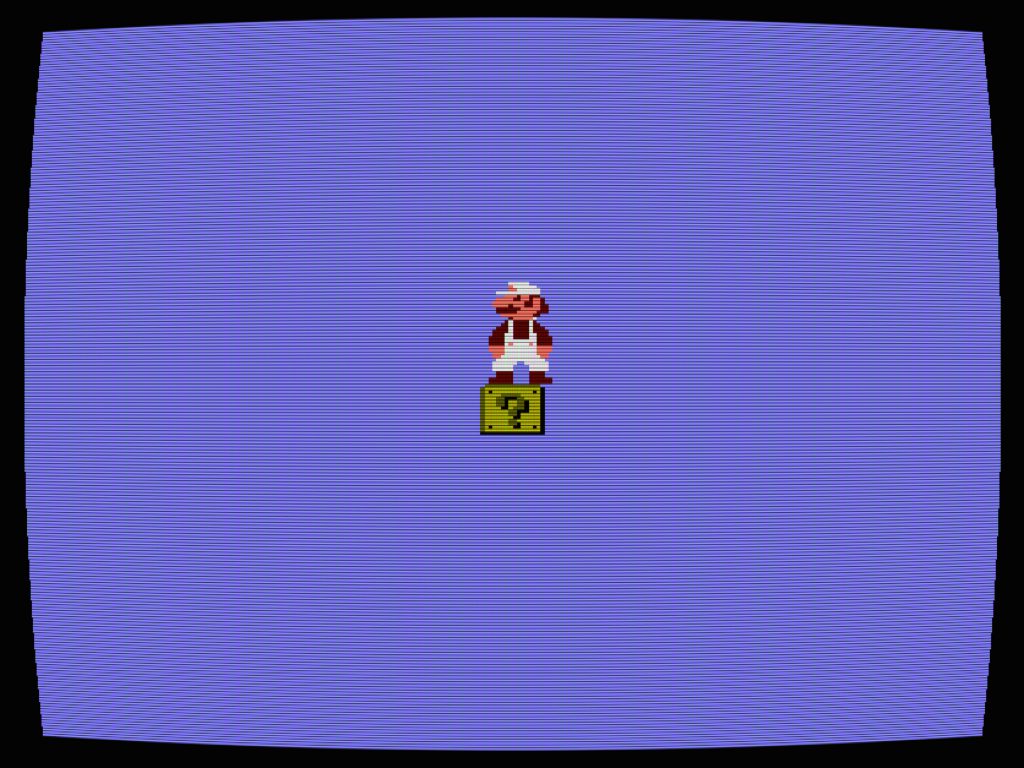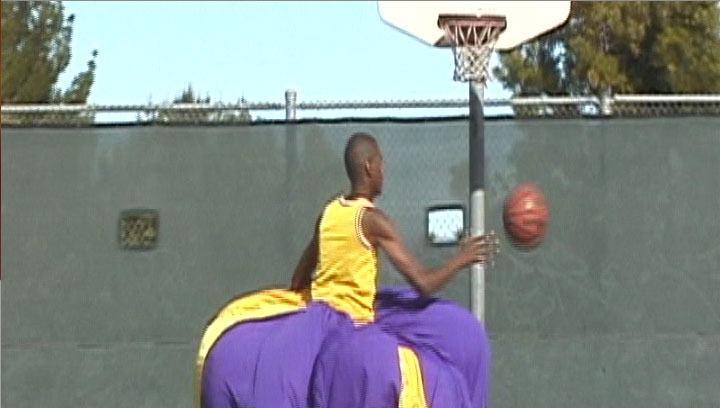PlayTime is open! In celebration of the artists in the exhibition, we’re featuring a series of upcoming link packs on their latest news. This week, we look at Cory Arcangel and Mark Bradford. The work of both of these artists encapsulates our PlayTime manifesto and the themes running through the show: reinventing rules, responding to uncertainty, and rewarding misbehavior—core actions at the very heart of play.
Cory Arcangel is known, among other things, for his work that consists of modified video games. In the PlayTime exhibition, we can see two of his video game hacks, reinventing the rules and resituating the expected outcomes of play. Trevor Smith, curator of PlayTime, suggests that while “sports video games allow us to bowl or shoot hoops without ever having to get off the couch,” that “professional athletes are so good at what they do that the extraordinary often appears effortless, which is why it’s really, really fun to watch them fail. So when Arcangel reprograms the game to have Shaq throw nothing but bricks, it’s like watching an extended sports blooper reel.”
Challenging expectations has been one of the key themes of the exhibition. Arcangel was the subject of a New Yorker profile in 2011 in which he explained he wasn’t a gamer, even though the games works are what made his name in the art world. “We had an Atari early on, but we never had a Nintendo. I’d watch my friends play when I went to their houses, but that’s it. I think that’s why my pieces are about watching, not interacting.”
When fellow artist Mary Heilman interviewed him that same year he said she wondered whether the artists behind Super Mario ever looked at Georgia O’Keeffe paintings. Arcangel responds, “I feel like it’s possible. Those games aren’t art objects, but they came out of culture. I always assumed those graphics were influenced by Pop art. At least that was always my interest in those graphics. They are so simple. I thought, Oh, I could put this in a gallery and people would probably think it was art.”
More recently, Arcangel spoke with curator Venus Lau for Ocula about his company Arcangel Surfware, which makes everything from fidget spinners to sweatpants to books: “A lot of these things I am making do not present themselves as this kind of revelation; they present themselves as almost a kind of borderline, or an insult or something, in order to create a grand monument. Our electronic lives are so silly. We are surrounded by all this junk! That’s the energy I am after. That’s ridiculous.” We’ve heard you can also find Arcangel on Are.na, an artist-designed social network.
Defying expectations (as revealed repeatedly throughout this 2015 New Yorker profile) brings us to Mark Bradford and his piece for the PlayTime exhibition, Practice (which he discusses the making of here). Bradford’s height (he’s 6’8″) has always led people to assume he pursued basketball (he actually worked in his mother’s hair salon). Curator Trevor Smith explains, “Bradford plays with both career expectations and gender norms by wearing a hoop skirt to practice basketball. The flowing skirt gets in the way of dribbling and trips him up as he drives for the basket. It’s a way for him to create an image of tension between appearance and desire.” In his (Practice-related) photographic piece Pride of Place, the artist once again dons the Lakers hoop skirt and engages in an indelicate choreography that challenges racial, sexual, and gender norms.
Last spring, Bradford represented the United States at the 2017 Venice Biennale and, in the fall, he debuted a new work at the Hirshhorn Museum in Washington, DC. He spoke with art critic Carolina A. Miranda of the Los Angeles Times in February about his most recent paintings, which employ comic books as media: “I read comics as a kid. Marvel. Archie. Superman. Batman. Wonder Woman. The classics. All the movies you see now. Comic books are always about the meta. The archetype of this or the archetype of that. It’s civilization on steroids — and so it kind of fit with this moment. Everything is exaggerated. That’s what we’re living. . . . Plus, the colors in comic books are pow, kabow! They’re more in your face. They are these epic landscapes that you fall into, but they are also a grid. It’s just boxes. And they are these grids and grids and bubbles. If you abstract it, it’s like a Mondrian. It’s this art historical grid that goes back to Euclid — you know, back in the day.”
Check in next week for a new roundup of the latest play news and stories.
(Image credit: Courtesy of the artist and Hauser & Wirth, Zurich, Switzerland.)












